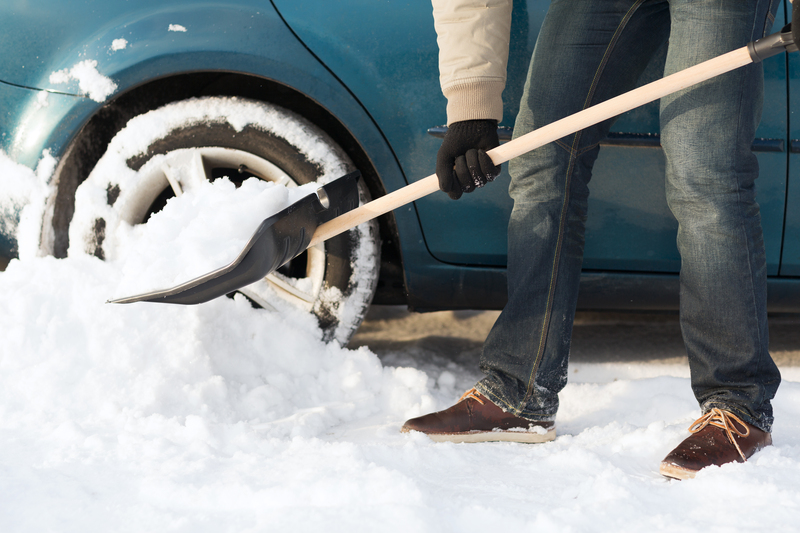Decluttering Demystified: Preparing for a Successful Move
Posted on 23/05/2025
Decluttering Demystified: Preparing for a Successful Move
Moving house is more than just transferring belongings from one place to another. It's a transformative experience that often prompts us to reassess what we own and why we keep it. At the heart of every smooth transition is effective decluttering. Demystifying the decluttering process is crucial for ensuring your move is not just successful, but also considerably less stressful.

Why Declutter Before You Move?
Decluttering before a move offers manifold benefits. Not only can it save you time and money, but it also allows you to start afresh in your new home. Here's why pre-move decluttering is a step you shouldn't skip:
- Reduce Moving Costs: The fewer items you transport, the lower your expenses -- from packing materials to moving company charges.
- Streamline Your Unpacking: With less clutter, settling into your new space becomes faster and more enjoyable.
- Emotional Fresh Start: Letting go of the unnecessary can be liberating and set a positive tone for your new beginning.
- Safer Move: Removing excess reduces the risk of injury during packing and moving bulky or heavy objects.
Understanding the Psychology of Decluttering
Many of us hold onto possessions for emotional or psychological reasons. Understanding these motivations makes the process easier. Common emotional barriers include:
- Sentimental Value: Items may remind us of loved ones, past achievements, or cherished memories.
- Fear of Waste: The thought of discarding still-functional items can feel irresponsible.
- Future Use: We keep things thinking, "I might need this one day."
A successful move means recognizing these reasons but not letting them control your decisions. Consider your new home's space, your lifestyle, and your current needs when choosing what to keep.
Decluttering Demystified: A Step-by-Step Approach to Success
1. Start Early and Set a Timeline
The best way to declutter for a move is to begin as soon as you know you're relocating. Spreading the task over weeks will prevent feeling overwhelmed. Create a decluttering schedule:
- Assign specific rooms or areas to each week or weekend.
- Set mini-goals and celebrate progress to stay motivated.
2. Gather Essential Supplies
Prepare by collecting plenty of:
- Sturdy boxes
- Garbage bags
- Markers and labels
- Cleaning supplies
Having these items ready will make both sorting and packing smooth and efficient.
3. Sort Items Room-by-Room
Begin in underused spaces, such as the attic, basement, or guest room. Tackling these first builds momentum. For each room, divide items into four categories:
- Keep: Items you use regularly or truly love.
- Donate: Gently-used items that could benefit someone else.
- Sell: Items of value you no longer need.
- Discard: Broken, expired, or worn-out items.
Tip: Avoid the temptation to create a fifth "maybe" pile--it only prolongs decision-making!
4. Use the "One-Year" Rule
A classic method in decluttering for relocation is evaluating if you've used an item in the past year. If not, it's likely you can live without it.
5. Tackle Sentimental Items Last
Emotional attachment can derail progress if addressed too soon. Focus first on practical decisions, and when you do reach keepsakes, consider photographing souvenirs or repurposing them creatively.
Decluttering Strategies: Expert Tips for Every Space
The Kitchen
- Discard expired foods and spices.
- Reduce duplicates (do you really need five spatulas?).
- Sort dishware and small appliances--keep only essentials.
The Bedroom
- Sort clothes by season and style; donate what you haven't worn in a year.
- Pair socks and cull mismatches.
- Edit accessories and jewelry, keeping sentimental or versatile features only.
Living Room & Family Areas
- Pare down books, magazines, and decor.
- Check electronics for obsolete or broken items.
- Store away only what fits your new living space and lifestyle.
Bathrooms
- Dispose of expired medications, makeup, and toiletries.
- Downsize towels and linens to a manageable number.
Garage, Attic, and Basement
- Separate seasonal equipment--decide what merits the storage space.
- Recycle or toss broken tools and unused paint or chemicals.
- Organize memorabilia and holiday decorations for easier transport.
Eco-Friendly Decluttering: Moving with Mindfulness
Responsible decluttering means keeping sustainability in mind:
- Donate: Pass on usable items to local charities, shelters, or community centers.
- Recycle: Electronics, textiles, plastics, and paper can often be processed rather than dumped.
- Sell Online or at Yard Sales: eBay, Facebook Marketplace, or neighborhood events help recirculate goods.
- Hazardous Waste: Dispose of paints, batteries, and chemicals at appropriate facilities.
Being mindful in your decluttering journey greatly reduces environmental impact and benefits your community.
Decluttering as a Family
If you're moving with family, involve everyone. Each member can take responsibility for their spaces or belongings, making the process faster and far more inclusive. For children, frame decluttering as an opportunity to donate toys they've outgrown to children in need.
Tips for Family Involvement:
- Turn sorting into a game with small prizes or rewards.
- Let kids pack their "favorites box" for cherished essentials.
- Encourage open conversations about letting go and making space for new memories.
Preparing for a Successful Move: Packing Smarter, Not Harder
Once your decluttering process is complete, you'll find that packing is far less daunting. Now, with only the items you value and need, you can:
- Pack Efficiently: Group similar items together and label boxes clearly.
- Protect Fragile Items: Use bubble wrap, towels, or soft clothing to cushion breakables.
- Keep Essentials Handy: Pack a box with must-have items for your first days in the new home.
A well-organized move begins with successful sorting--decluttering truly demystified.
Common Pitfalls and How to Avoid Them
- Procrastination: Waiting until the last minute results in hasty decisions. Set a timeline and stick to it.
- Indecision: Limit the time spent on each item. If unsure, remember the "one-year" rule or ask yourself, "Would I buy this today?"
- Sentimental Roadblocks: Give yourself permission to let go, and create other ways to preserve memories (journaling, photos).
- Inefficient Sorting: Avoid simply moving mess from one box to another--sort thoroughly before packing.

Decluttering Tools and Apps
Modern technology can streamline decluttering and packing:
- Sortly: Create visual inventories for each space or box.
- LetGo & Facebook Marketplace: Quickly list items for sale in your area.
- Trello: Manage checklists for decluttering and moving tasks with customizable boards.
Utilizing these tools makes preparing for a stress-free move easier than ever.
Cultivating a Decluttered Mindset for the Future
Once you've experienced the benefits of decluttering for a move, keep up the momentum! Regularly evaluate your possessions. For every new item brought home, consider what you can let go. This prevents future clutter and maintains an organized and harmonious living environment.
The Last Word: Moving Forward
Decluttering demystified is about more than just discarding old possessions; it's building a foundation for your next chapter. Whether you're downsizing, upsizing, or simply relocating across town, these practical steps will prepare you for a successful, stress-free move. Embrace the process, focus on what truly matters, and step confidently toward your new beginning with a lighter load and a refreshed mindset.



